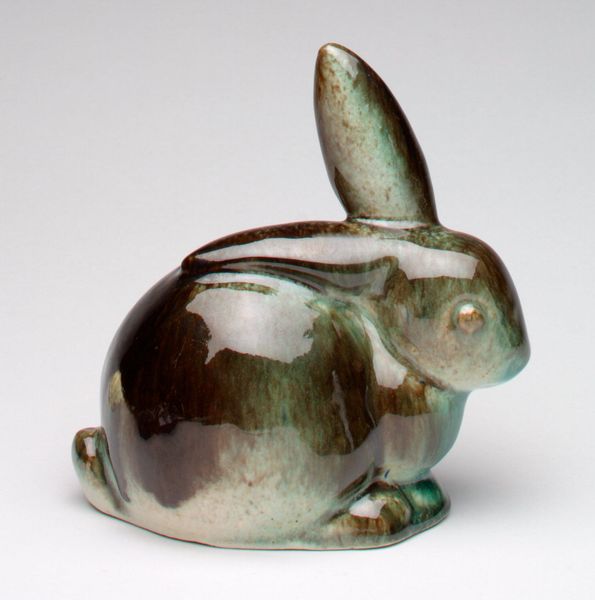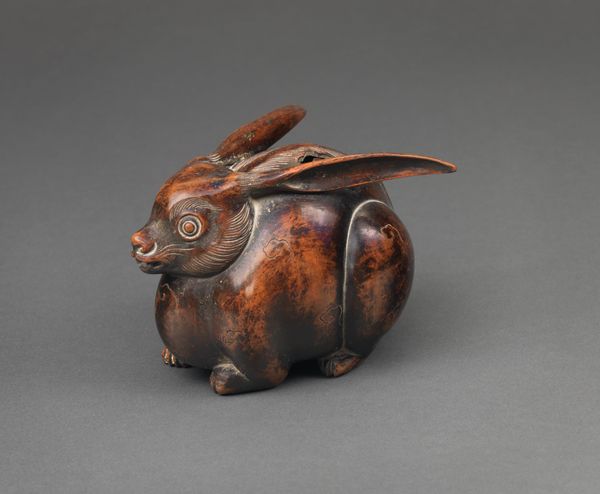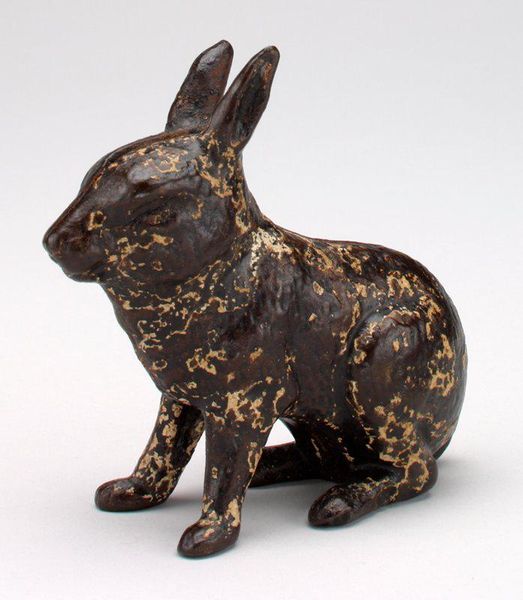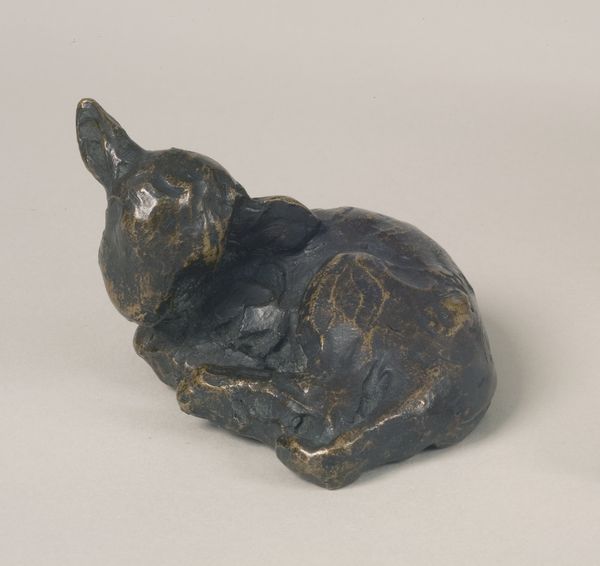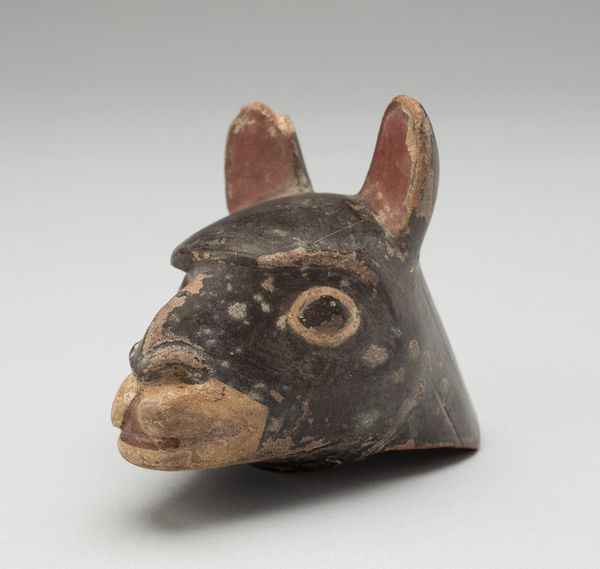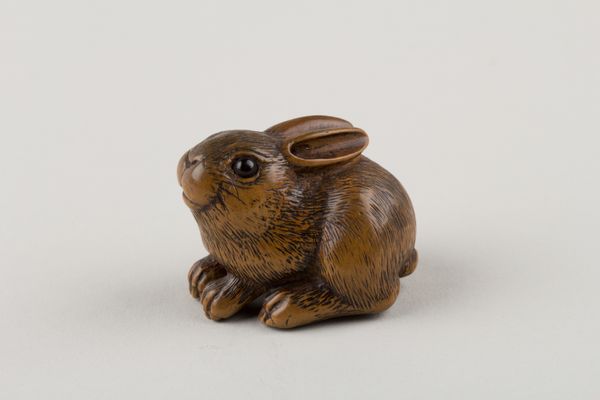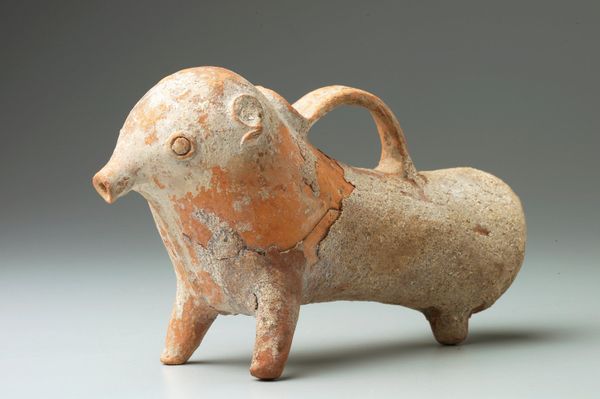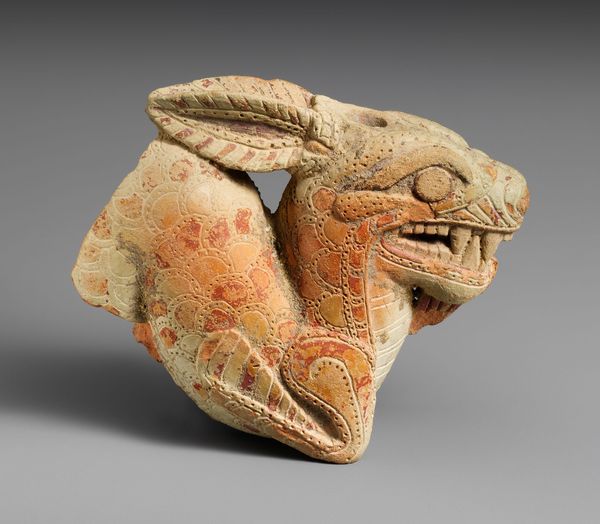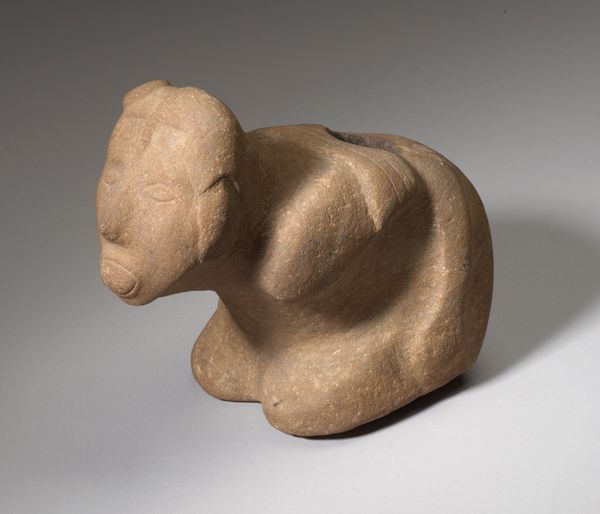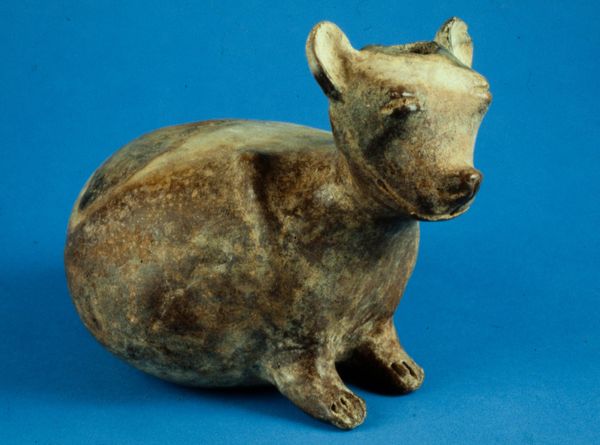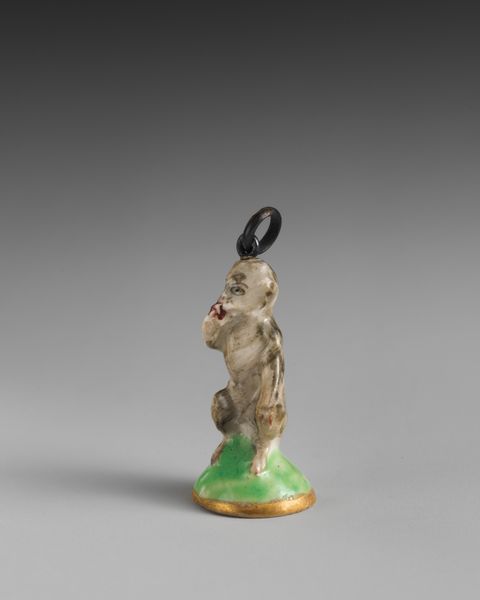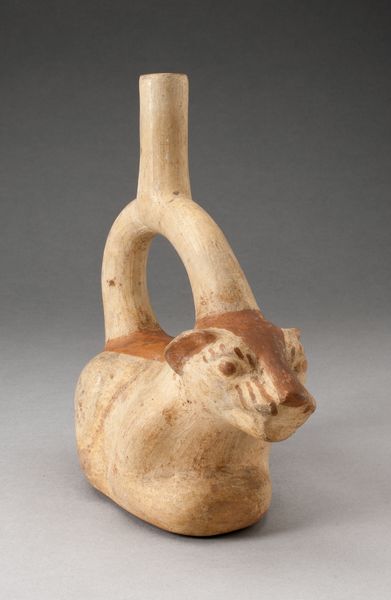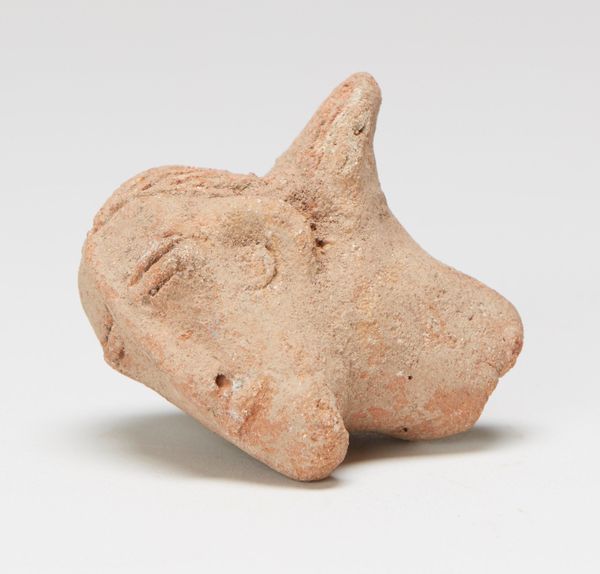
ceramic, earthenware, sculpture
#
animal
#
ceramic
#
vessel
#
earthenware
#
sculpture
#
decorative-art
Dimensions: 8.6 × 7.6 × 16.8 cm (3 3/8 × 3 × 6 5/8 in.)
Copyright: Public Domain
Curator: Welcome. Today, we're exploring a somewhat peculiar piece: a Rhyton Cup in the Form of a Hare, crafted around 1780 by the Staffordshire Potteries. Editor: It's strangely captivating, isn’t it? A glazed ceramic hare head, clearly designed as a drinking vessel. It has this simultaneously rustic and elegant feel. Curator: Precisely. Rhytons, historically, were drinking vessels often shaped like animal heads, used in ancient Greece and other cultures. The Staffordshire potters, in the 18th century, revived this form but gave it a very distinct English sensibility. It speaks to the fascination with classicism that permeated British society at the time. Editor: I find it so interesting that this blends this history with English decorative art. What does it tell us about the social contexts for which it was made, and who were drinking out of rabbit heads? I see the grotesque merging with luxury to make something intriguing, but also bizarre. Curator: Absolutely. The creation and consumption of objects like these were inherently linked to the rising affluence and social aspirations of the middle classes in England. Owning decorative art was a way of signalling one's refined taste and education. Furthermore, the choice of a hare is not accidental: hares held symbolic meaning related to fertility and rebirth and hunting, so, to consume alcohol out of its hollow head might even reference class tensions around who gets to hunt. Editor: It's that blend of the whimsical and the slightly macabre that's so telling. Thinking about the decorative arts of the period, it's easy to read into these animal forms and understand something beyond their initial playful allure, a more subversive edge. The way you mention who consumes from its skull, for instance, highlights that access is the crucial distinction and social value of these wares. Curator: Yes, and that the sculpture acts as a vessel to both embody and perform that act. Editor: What this all suggests is the complex narratives encoded within even seemingly simple objects. Considering this Rhyton, from both an art historical and a critical theory lens, grants us a deeper look at the intersectional relationships that shape its meaning and legacy. Curator: A worthwhile consideration, thank you!
Comments
No comments
Be the first to comment and join the conversation on the ultimate creative platform.
